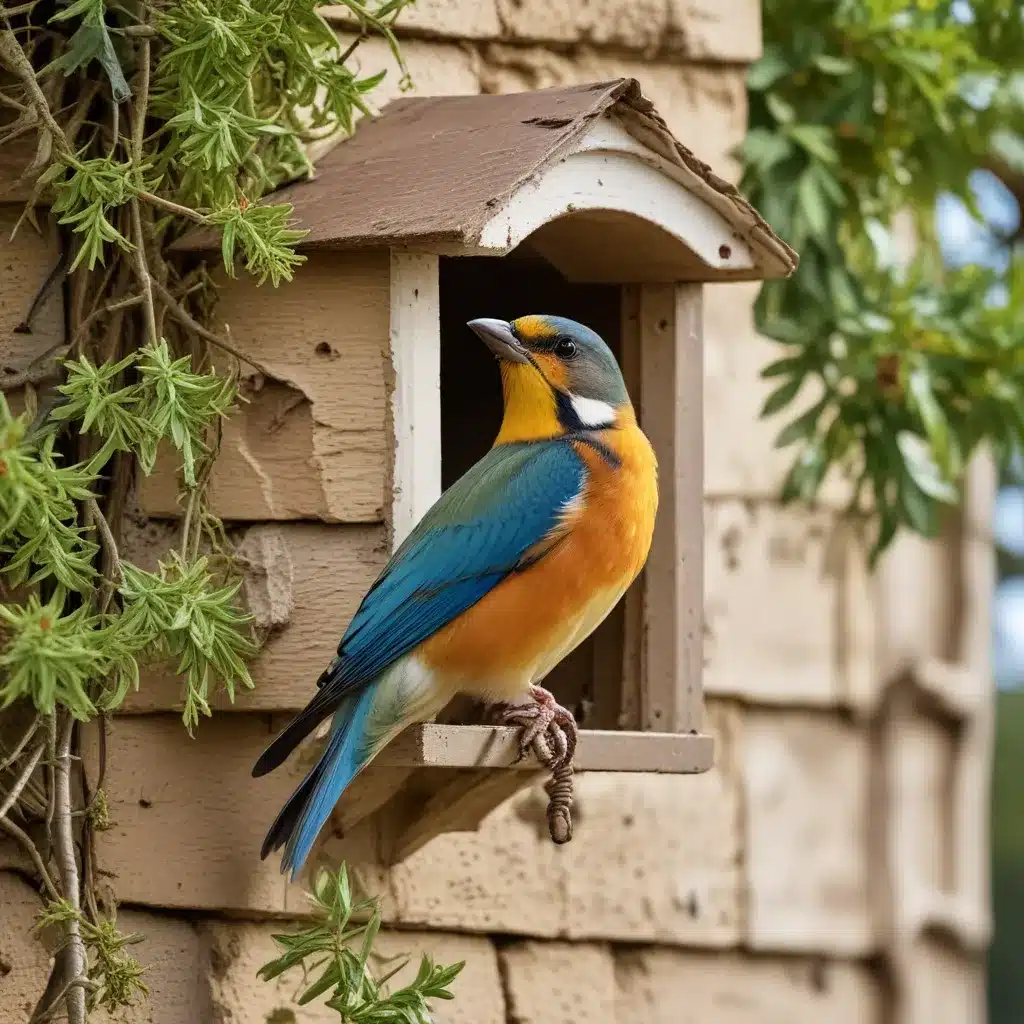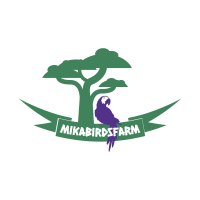
As an experienced avian caretaker and expert in all things bird-related, I’m here to share my essential tips for keeping your home safe and secure for your feathered friends. Whether you’re welcoming a new parrot, budgie, or cockatiel into your family or simply want to create a bird-friendly environment, proper bird-proofing is crucial to ensure your winged companions can explore their space freely and safely.
Identifying Common Bird Pests in the Home
While birds can make wonderful pets, some species may see your home as their own personal playground – and not always in a good way. Certain wild birds like pigeons, doves, woodpeckers, nuthatches, sparrows, and house finches are notorious for causing damage and creating nuisances inside and outside the home.
Pigeons and Doves
These adaptable birds are masters at finding entry points and making themselves at home, whether it’s nesting in your eaves, roosting on your porch, or leaving unsightly droppings all over. Their persistent nature and tendency to multiply quickly can quickly turn a minor annoyance into a full-blown infestation.
Woodpeckers and Nuthatches
The incessant pecking and drilling of woodpeckers and nuthatches can wreak havoc on your home’s exterior, from siding and trim to even the structural wood itself. Their sharp beaks can easily penetrate surfaces, creating holes and unsightly damage.
Sparrows and House Finches
These small, feisty birds may seem harmless, but they’re adept at squeezing through the tiniest gaps and crevices to establish nests in attics, vents, and other hidden spaces. Their nesting materials and droppings can quickly become a nuisance and even a health hazard.
Identifying and addressing these common bird pests is the first step in creating a safe, bird-proof home environment. By understanding their behaviors and potential entry points, you can implement effective deterrents and preventative measures to keep your winged invaders at bay.
Identifying Bird Entry Points
One of the most crucial aspects of bird-proofing your home is identifying and sealing off potential entry points. Birds are masters at finding the smallest gaps and openings, so a thorough inspection of your home’s exterior is essential.
Windows and Skylights
Large, transparent surfaces like windows and skylights can be a major draw for birds, who may mistake them for open spaces and attempt to fly through. Strategically placing decals, stickers, or other visual cues can help birds recognize these surfaces as solid barriers.
Vents and Chimneys
Openings like attic vents, exhaust fans, and chimneys provide easy access for birds looking to nest or seek shelter. Covering these areas with properly sized wire mesh or other secure barriers can effectively deter unwanted feathered visitors.
Gaps and Openings
Cracks, holes, and other small openings around your home’s exterior can serve as gateways for determined birds. Carefully inspecting and sealing these entry points with caulk, expanding foam, or weatherstripping can go a long way in keeping your home bird-free.
By proactively identifying and addressing these common bird access points, you can significantly reduce the risk of unwanted avian guests making themselves at home in your living space.
Effective Bird Deterrents
Once you’ve identified the potential entry points, it’s time to implement a multi-pronged approach to bird deterrents. A combination of visual, auditory, and physical barriers can work together to create a comprehensive defense against unwanted avian visitors.
Visual Scares
Strategically placed decoys, reflective surfaces, or even simple objects like plastic owls or suspended streamers can create the illusion of danger and deter birds from landing or nesting in certain areas. These visual deterrents work by triggering the birds’ natural instincts to avoid perceived threats.
Auditory Deterrents
Ultrasonic devices, recorded bird distress calls, or other high-frequency sounds can be effective in driving birds away from specific locations. These auditory deterrents take advantage of birds’ sensitive hearing to create an uncomfortable environment that encourages them to seek refuge elsewhere.
Physical Barriers
Installing physical barriers like netting, wire mesh, or spikes in strategic locations can physically prevent birds from accessing entry points or landing on surfaces. These physical deterrents create a physical obstacle that birds are less likely to attempt to overcome.
By implementing a combination of these effective deterrents, you can create a multi-layered defense that discourages birds from even considering your home as a potential nesting or roosting site.
Protecting Outdoor Structures
Your home’s exterior features, such as roofs, porches, and eaves, can also be magnets for unwanted avian activity. Proactively addressing these outdoor areas is crucial to maintaining a bird-free environment.
Nesting Prevention on Roofs
Birds, particularly pigeons and doves, often seek out the nooks and crannies of roofs as ideal nesting sites. Regularly inspecting and sealing any potential nesting spots, as well as installing physical barriers like spikes or netting, can effectively deter these feathered intruders.
Safeguarding Porch Beams
The sheltered, elevated spaces of porch beams and overhangs can be irresistible to birds looking for a safe place to roost or nest. Applying bird-repelling gels or installing deterrent devices on these surfaces can discourage birds from taking up residence.
Deterring Birds from Eaves
The recessed areas of your home’s eaves and soffits provide cozy, hidden spots that birds find attractive for nesting. Keeping these areas clear of debris, installing physical barriers, and using visual or auditory deterrents can help prevent birds from making themselves at home in your eaves.
By focusing on these key outdoor structures, you can create a comprehensive bird-proofing strategy that keeps your home’s exterior free from unwanted avian occupants.
Minimizing Bird Droppings and Nesting
Even with effective deterrents in place, you may still encounter the occasional bird droppings or nesting materials around your home. Properly addressing these issues is essential for maintaining a clean, safe, and bird-free environment.
Cleaning Bird Debris
Regularly inspecting and cleaning up any bird droppings or nesting materials is crucial for both hygiene and preventing the spread of potential diseases. Use appropriate personal protective equipment and follow proper cleaning protocols to ensure your safety while addressing these messes.
Preventing Nesting Materials
Birds are skilled at finding suitable nesting materials, from twigs and leaves to human-made items like string or fabric. Removing these potential resources from your outdoor areas can discourage birds from attempting to build nests on your property.
Discouraging Roosting Spots
Certain areas of your home, such as ledges, beams, or trees, may attract birds as ideal roosting spots. Applying bird-repelling gels or installing physical barriers in these areas can make them less appealing to feathered visitors.
By staying vigilant and proactively addressing any bird-related debris or nesting attempts, you can maintain a clean, bird-free environment that keeps your home and family safe.
Safely Removing Nests and Fledglings
In the event that you do discover bird nests or fledglings on your property, it’s important to handle the situation with care and in compliance with local regulations.
Nest Removal Techniques
If a nest is posing a safety hazard or needs to be removed for any reason, it’s crucial to do so in a humane and responsible manner. Consult with local wildlife authorities or avian experts to ensure you’re following the proper protocols and avoiding any potential legal issues.
Handling Fledgling Birds
Encountering a young, featherless fledgling bird on the ground can be a concerning situation. Resist the urge to intervene directly, as this can do more harm than good. Instead, contact local wildlife rehabilitation centers or agencies for guidance on the appropriate course of action.
Contacting Wildlife Experts
In any case where you’re unsure of how to safely handle a bird-related issue, it’s best to reach out to qualified wildlife experts or authorities. They can provide valuable advice and assistance to ensure the well-being of both the birds and your family.
By taking a thoughtful, informed approach to nest and fledgling management, you can minimize the risks and disruptions while prioritizing the humane treatment of these feathered creatures.
Landscaping for Bird-Friendly Yards
While deterring unwanted birds from your home is essential, you can also take steps to create a more bird-friendly outdoor environment that benefits both your feathered friends and your own enjoyment of your property.
Native Plant Selection
Choosing native plants and trees that provide food, shelter, and nesting materials can attract a diverse array of beneficial bird species to your yard. These bird-friendly landscaping choices can enhance your outdoor experience while supporting the local avian population.
Providing Bird Baths
Offering a reliable source of clean, fresh water through strategically placed bird baths or small ponds can draw birds to your yard, providing hours of enjoyment as you observe their activities.
Avoiding Attractants
Be mindful of potential food sources or nesting materials that could inadvertently draw unwanted birds, such as open trash cans, pet food bowls, or loose building materials. Properly securing these items can help maintain the balance between your bird-friendly yard and your bird-proof home.
By striking a thoughtful balance between deterring pests and welcoming desirable bird species, you can create a harmonious outdoor environment that benefits both you and your feathered neighbors.
Regulatory Considerations
When it comes to bird-proofing your home, it’s important to be aware of the relevant local ordinances, federal regulations, and humane treatment guidelines that may apply.
Local Ordinances
Certain municipalities or homeowners’ associations may have specific rules or regulations regarding the management of birds, nests, or other wildlife on private property. Familiarizing yourself with these local guidelines can help ensure you’re taking the appropriate actions.
Migratory Bird Act
The Migratory Bird Treaty Act is a federal law that protects migratory bird species, their nests, and their eggs. Before attempting to remove or relocate any nests, it’s crucial to consult with local wildlife authorities to ensure compliance with this important regulation.
Humane Treatment Guidelines
Regardless of the species, it’s essential to approach any bird-related issues with a focus on humane, ethical, and responsible practices. Following established guidelines for the safe and compassionate handling of birds can help minimize stress and ensure the well-being of these remarkable creatures.
By staying informed and adhering to the relevant regulations and best practices, you can effectively bird-proof your home while demonstrating a commitment to environmental stewardship and animal welfare.
In conclusion, creating a bird-safe home environment requires a multi-faceted approach that addresses potential entry points, implements effective deterrents, and addresses any existing bird-related issues with care and diligence. By taking the time to thoroughly bird-proof your living space, you can enjoy the beauty and wonder of birds while maintaining a secure, comfortable, and bird-free home. For more information and resources, be sure to visit Mika Birds Farm – your trusted source for all things avian.


